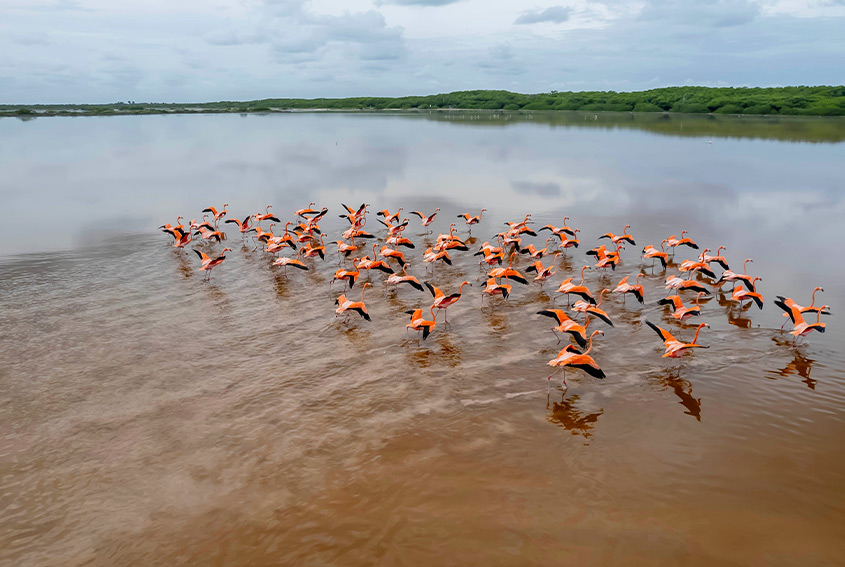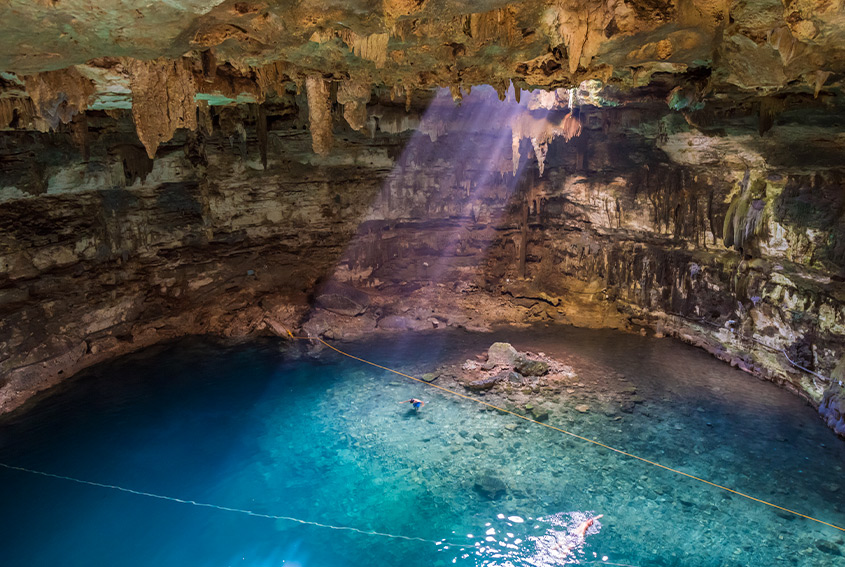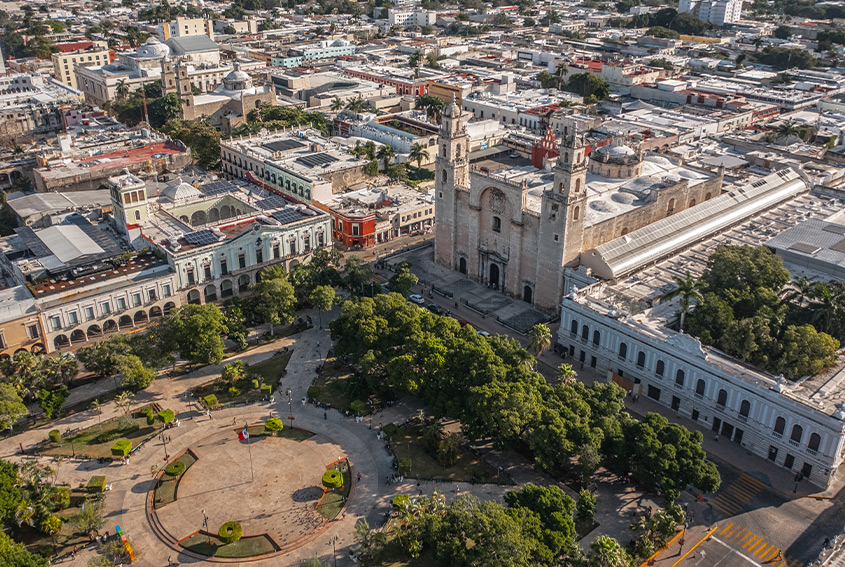2024 travels in the Mexican Caribbean and Yucatan
With the dawn of the new year, you may already be dreaming about your next Mexican Caribbean trip. Relaxing on the beach or poolside at Royal Resorts will be top of your list but when you feel like exploring, a world of incredible travel experiences is right on the doorstep. Discover the history of the Yucatan with visits to the archaeological sites and colonial cities, plan a family day out at the Riviera Maya’s famous nature parks, spend your time island hopping, dive into jungle cenotes and go in search of colorful wildlife. Here are some tour ideas to get you started.
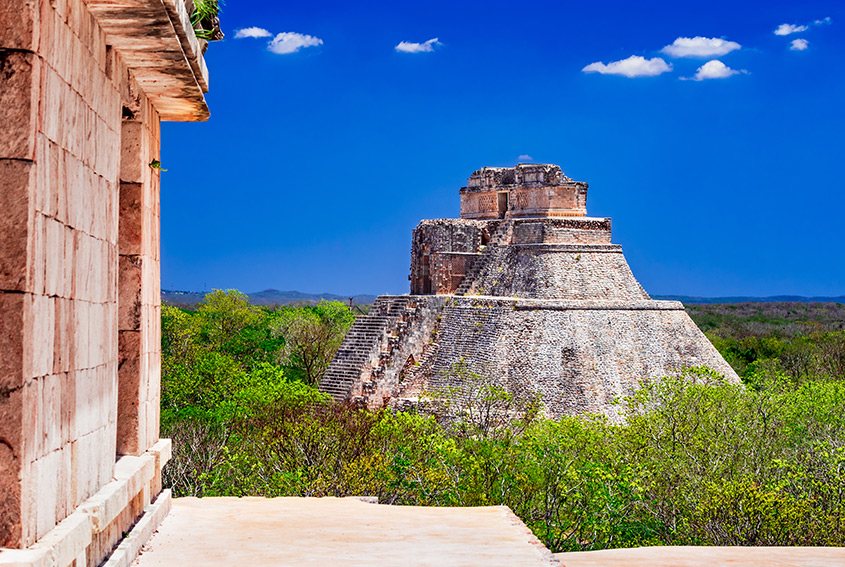
Ancient times
A visit to one of the ancient Maya cities that pepper the Yucatán landscape is an excellent way to channel energy, renew your ties with nature and learn about this amazing Mesoamerican civilization. Whether you revisit Chichen Itza or Tulum or explore further afield to Uxmal, Ek Balam or even Kohunlich in southern Quintana Roo, you’ll marvel at the stucco carvings on palace walls and the genius of the long-lost architects who aligned their temples and pyramids so perfectly as to capture the rays of the sun and moon or the dance of the planets across the night sky during the year.
If you are a history buff, why not plan to explore Chichen Viejo, a recently restored area in Chichen Itza (small groups, reservations required). The earliest palaces and temples at this immense archaeological site are deep in the forest a 25-minute walk away from the Sacred Plaza and Pyramid of Kukulcan.
Also opening this year at Chichen Itza, the new Site Museum will showcase treasures found during digs in the area, including pottery and sculptures. Offerings cast into the Sacred Cenote such as turquoise and gold figurines recovered when the murky waters were dredged may also be displayed.
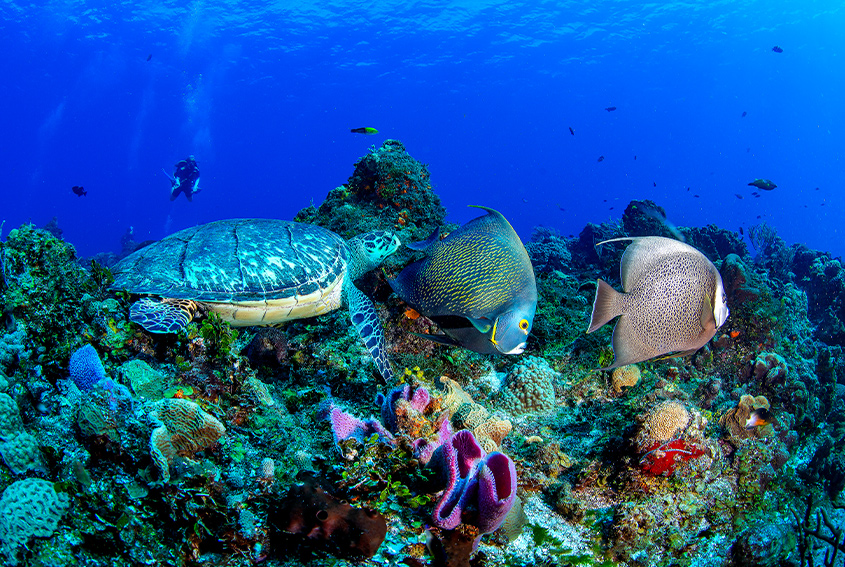
Dive deep
Come face to face with the colorful creatures of the coral reef on a snorkeling or scuba trip along the Mesoamerican Reef. The world’s second longest reef system runs south along the Mexican Caribbean coast from Contoy to Xcalak and continues into neighboring Belize.
From Cancun, Isla Mujeres and Puerto Morelos to Cozumel, Akumal, Mahahual and Chinchorro atoll off the coast of southern Quintana Roo, there are spectacular dive sites teeming with marine life for all levels of expertise. Crystal-clear inlets or caletas such as Xel-Ha, Yalku and Chankanaab on Cozumel are a snorkelers’ paradise.
If you are an avid snorkeler but have never tried scuba diving, may 2024 be the year that you decide to take a PADI resort course and immerse yourself in the spectacular coral world.
In search of wildlife
Renew your ties with Mother Nature this year with a visit to some of the Yucatan’s wild places. From the jungle to the wetlands and the sea, go in search of colorful birds, animals and marine life.
On the Gulf coast of the Yucatan, Rio Lagartos and Celestun Biosphere Reserves are home to thousands of flamingos, 16 different species of herons and egrets, hawks, kingfishers and a wealth of bird and animal life.
Sian Ka’an, the huge biosphere reserve protecting swathes of jungle and wetlands, beaches and coral reefs in northern and central Quintana Roo, is another wildlife haven that nature lovers won’t want to miss.
Sian Ka’an is home to the elusive jaguar, puma and ocelot, spider and howler monkeys, manatees, crocodiles and a variety of birds. Species you may see include roseate spoonbills, ibis, osprey, reddish egrets and boat-billed herons in the wetlands and jungle residents such as the keel-billed toucan, turquoise-browed motmot, gregarious families of coatimundis and shy solitary agoutis.
One popular Sian Ka’an trip takes you to the Mayan site of Muyil in the jungle and then on a boat through the wetlands to Boca Paila on the coast. You’ll be following the route taken by Mayan merchants over 1,000 years ago. They dredged and widened a natural channel in the mangroves so that their trading canoes could reach Muyil and a tiny temple is testimony to their presence.
Watch families of spider monkeys moving through the jungle canopy in the Punta Laguna community reserve near Coba. Nature lovers may even want to combine wildlife watching with Maya history on a longer trip to southern Quintana Roo and Calakmul Biosphere Reserve in Campeche, the kingdom of the jaguar.
Summer visitors can have their own amazing wildlife encounter with the biggest fish in the sea, the whale shark. From May to September, these gentle giants gather to feed on plankton and fish eggs in the waters off Holbox, Cabo Catoche and to the east of Isla Mujeres and Contoy. Eco trips start in June.
Explore the Maya Underworld
Beneath the limestone landscape of the Yucatan lies a different world, an immense network of caves, cenotes or sinkholes and underground rivers sculpted by the slow drip of water over millions of years. Stalactites and stalagmites, columns mirrored in still turquoise waters, galleries opening up in the darkness, it is no wonder that the Maya believed that caves and cenotes were the gateway to the Underworld, the home of the gods, Xibalba, and held them sacred.
If you have never visited the caves and cenotes of the Riviera Maya and Yucatan, why not plan a trip in 2024? Start with Rio Secreto, a cave system in the jungle south of Playa del Carmen that is one of the area’s natural wonders.
For a day of cenote fun, watery splashdowns and zip lining, visit some of the cenote parks along the Ruta de los Cenotes in the forest near Puerto Morelos.
Combine a trip to Chichen Itza or the colonial town of Valladolid with more cenote fun. Zaci, Dzitnup, Samula and Hubiku head the list of cenotes and there are many more.
All roads lead to Merida
This month Merida celebrates 482 years of its founding by Spanish conquistador Francisco de Montejo. Full of history and culture, the capital of the Yucatan is one of the world’s most popular small cities and is well worth a visit.
Explore the historic city center, the second largest in Mexico, comprising the main square dominated by the Cathedral and the surrounding barrios or neighborhoods. Stroll along Calle 60, spending time in Plaza Santa Lucia and going as far as Paseo de Montejo, the leafy boulevard lined with grand old mansions from the age of green gold, the henequen boom that brought prosperity to the city in the late 19th and early 20th centuries. Several of these homes are now open to the public and filled with antique furniture, Baccarat crystal, Limoges china and other treasures shipped from Europe by the original owners.
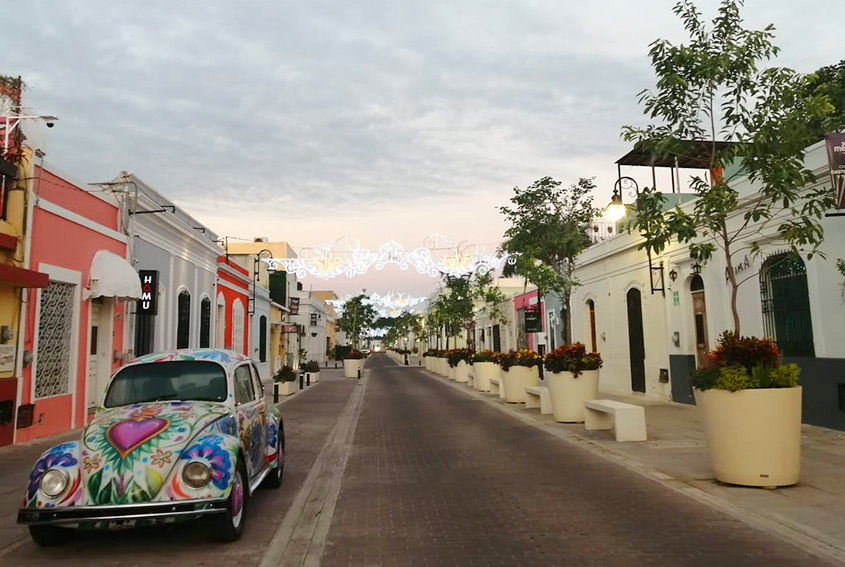
Calle 47, known as the Corredor Gastronómico, is a newly restored street from Santa Ana to El Remate at the beginning of Paseo de Montejo and which will eventually connect with Parque La Plancha, a large park that is being developed around the city’s old rail tracks and historic railway station.
From folk dancing and concerts to video mapping, theater and a Mexican show, there are cultural events during the week. The city also has a growing collection of art galleries and museums to visit. Shop for crafts, art, hammocks, Panama hats, jewelry and Mexican clothing. Dine on Yucatecan cuisine, Mexican dishes and fresh seafood from the Gulf of Mexico, only 20 minutes away. There are Italian, Spanish, International and Asian restaurants too and sweet treats ranging from gelato and tropical fruit sorbet to marquesitas, a waffle-like cone with a sweet or savory filling that is a Yucatecan favorite.
Enjoy an evening in an open-air restaurant, café or bar on Paseo Montejo or Santa Lucia square, listen to live music, people watch and soak up the ambiance.
Merida is extraordinary and if you would like to explore the surrounding area, the city is close to archaeological sites, historic towns, haciendas, Maya communities, cenotes and caves and is only a short drive from Gulf coast beaches.
In January, the city also plays host to the MeridaFest, with a lineup of concerts and dance, theater productions, movies, exhibitions and more.

